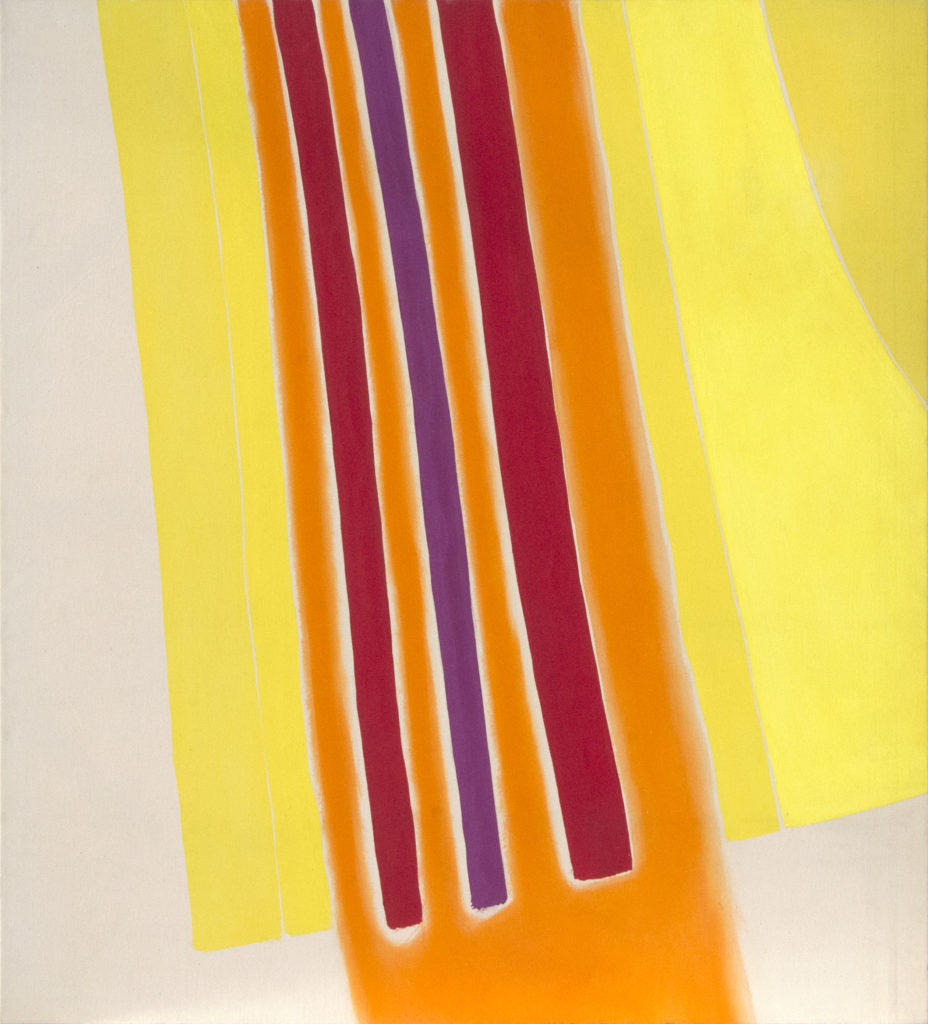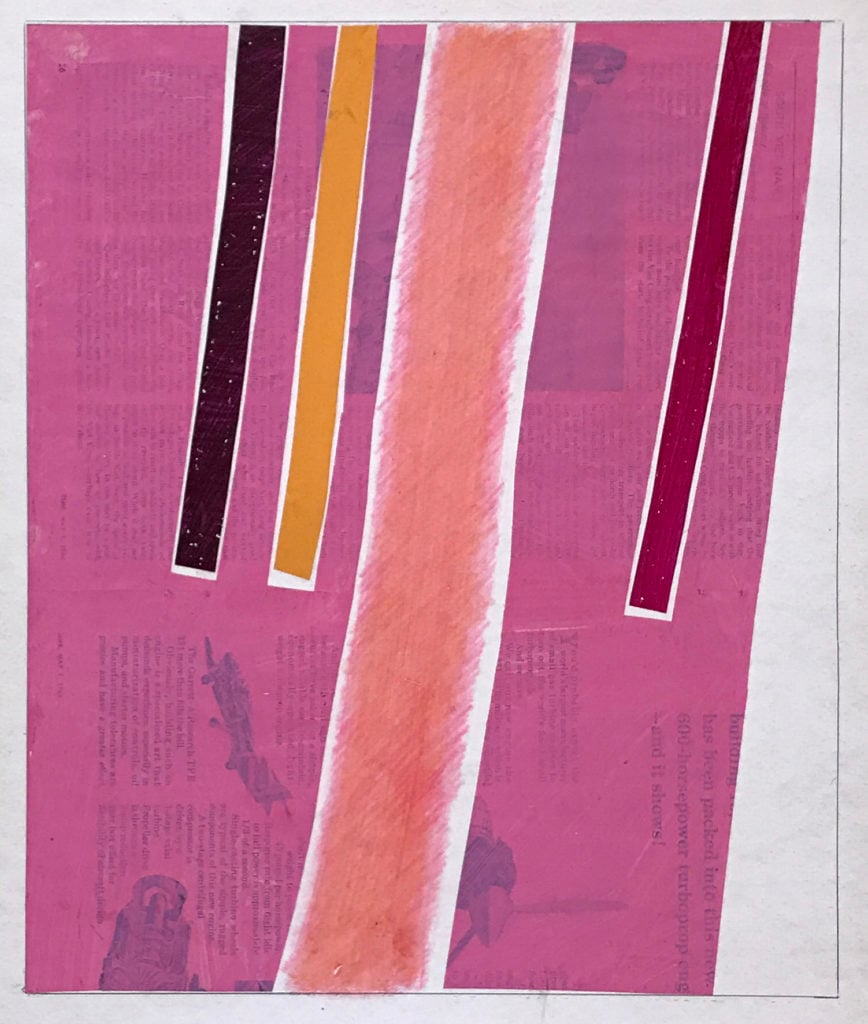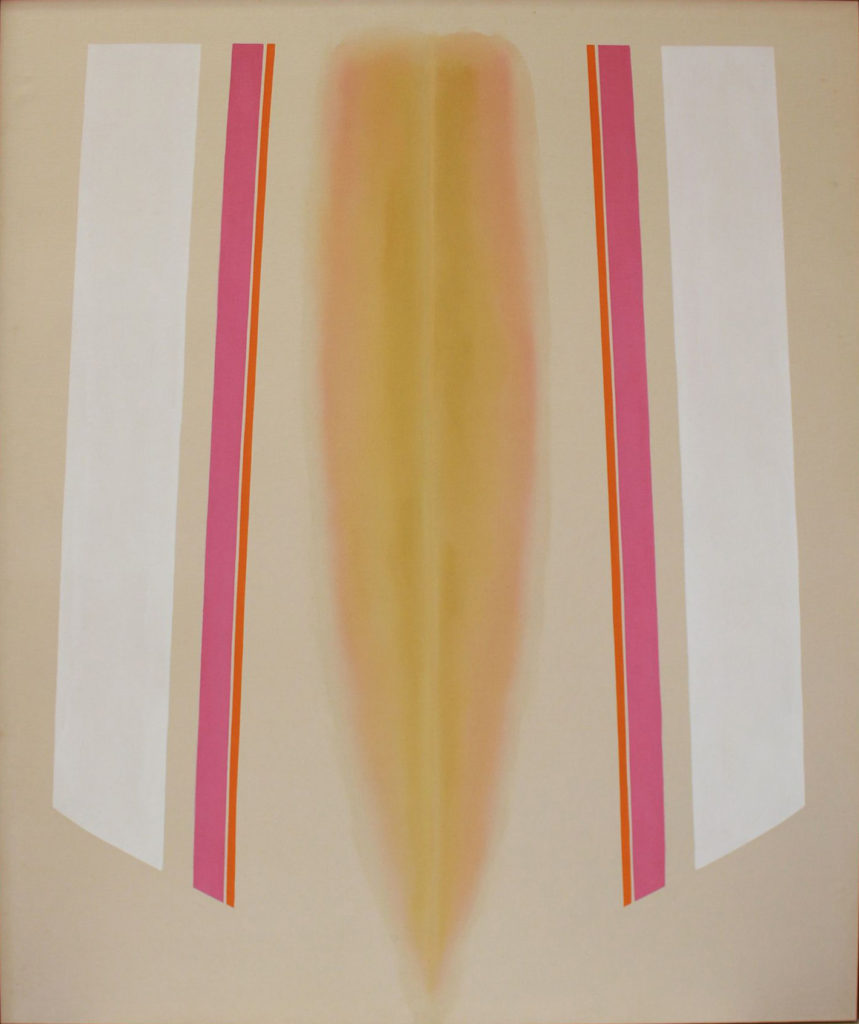Art Fairs
Once Forgotten Inside a Storage Unit, Work by New York School Painter Clinton Hill Shines at Frieze New York
The gorgeous works are a highlight of the fair's "Spotlight" section.

The gorgeous works are a highlight of the fair's "Spotlight" section.

Sarah Cascone

Art collectors searching for undiscovered gems at Frieze New York, look no further: Los Angeles’s Royale Projects has brought to light a suite of never-before-seen paintings by lesser known New York School painter Clinton Hill (1922–2003).
The colorful, lushly abstract canvases are among some 50 works recently rediscovered when the artist’s foundation decided to close its storage facility. The large-scale acrylic paintings and their accompanying studies had lain forgotten for decades.
“Tucked in a corner were two rolls wrapped in paper. We had no idea what they were,” said Hill’s longtime gallerist, Marilyn Pearl Loesberg, a trustee of the Clinton Hill/Allen Tran Foundation, in a statement. “There, rolled up, were these gorgeous paintings from the 1960s. We could hardly believe our eyes. Color-saturated, light-infused, magical paintings that no one knew existed.”
Hill was a contemporary of Helen Frankenthaler and Kenneth Noland. Close friends with artists including Man Ray, Jay DeFeo, and Barbara Chase-Riboud, he also worked as Mark Rothko’s assistant. Decades before the Stonewall Riots gave birth to the gay liberation movement, Hill moved to downtown New York with his life partner, Allen Tran, whom he met while serving in the Pacific during World War II.
Despite a long career stretching from the 1950s to his death in 2003, Hill failed to match the success of many of his peers—although his work is held in the collection of London’s British Museum; the Smithsonian American Art Museum in Washington, DC; and New York’s Guggenheim and Metropolitan Museum of Art.

Clinton Hill, #60 (1964). Courtesy of Royale Projects, Los Angeles, ©the Clinton Hill Archive, 2018.
“Clinton Hill did get a lot of recognition for his collages and other work from the 1970s and ’80s. If this body of work hadn’t remained hidden, I think it absolutely would have been successful,” Paige Moss, who co-owns Royale Projects with her husband, Rick Royale, told artnet News.
But it may have been Hill’s sexuality that influenced his decision not to exhibit these colorful canvases during his lifetime. “This work is very exposing. It’s very bright, and there’s sort of feminine qualities to it. In the context of the more macho New York art world of the time, we wonder if he was holding back a little bit, because he was very closeted,” Royale added. “There’s a moment of reassessment now of who was overlooked and why.”

Clinton Hill, Untitled (c. 1960s). Courtesy of Royale Projects, Los Angeles, ©the Clinton Hill Archive, 2018.
The gallery, which has just finalized and announced its representation of Hill’s’s estate, is hopeful that these rediscovered works will help prompt a reappraisal of the artist’s place in the art history books, establishing him as one of America’s leading abstract painters.
“This body of work makes the whole trajectory of his career, which seemed a little disjointed, make more sense,” said Royale. “Before, it seemed like in the ’80s, he just went super colorful after this very minimal process work, but really he was revisiting his explorations from the 1960s.”

Installation view of Clinton Hill works at Frieze New York 2018. Image courtesy Sarah Cascone.
And, it would seem that Hill is picking up momentum. A major survey exhibition of his work was on view at the Georgia Museum of Art earlier this year, and, as of 2 p.m. on the fair’s opening day, the gallery had already sold three of the works on view, for $95,000 each. Larger canvases are priced at $115,000, and the studies and collages are $12,000–28,000.